Oliver Thie. Schwarzraum / Gelbzeit
24 June to 2 September 2023 ⟶ Showroom
Installation View from outside. Showroom Galerie Georg Nothelfer. Photo: Gernot Seeliger.
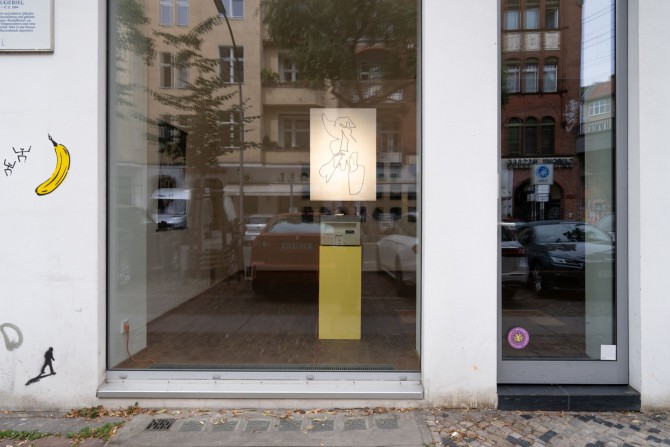
Installation View from outside. Showroom Galerie Georg Nothelfer. Photo: Gernot Seeliger.
Installation View Showroom Galerie Georg Nothelfer. Photo: Gernot Seeliger.
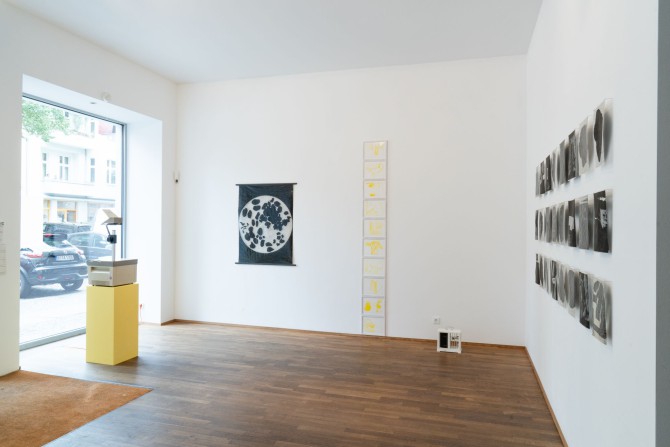
Installation View Showroom Galerie Georg Nothelfer. Photo: Gernot Seeliger.
Oliver Thie, aus der Serie: kleinlühen, 2022, Watercolor on Paper, 18 x 24 cm. Courtesy Oliver Thie.
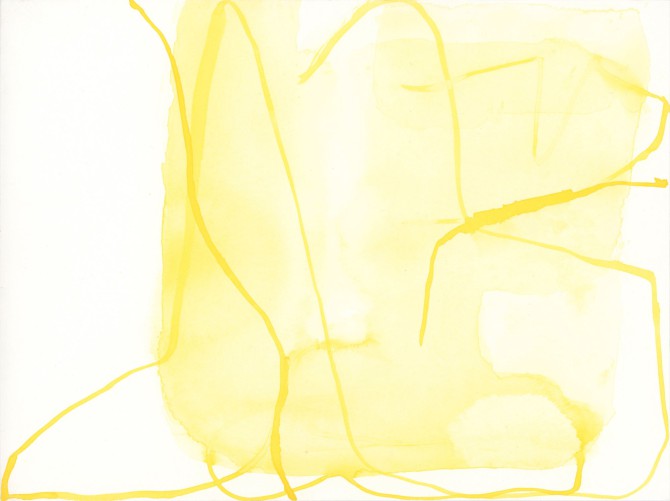
Oliver Thie, aus der Serie: kleinlühen, 2022, Watercolor on Paper, 18 x 24 cm. Courtesy Oliver Thie.
Oliver Thie, aus der Serie: kleinlühen, 2020, Watercolor on paper, 18 × 24 cm. Courtesy Oliver Thie.
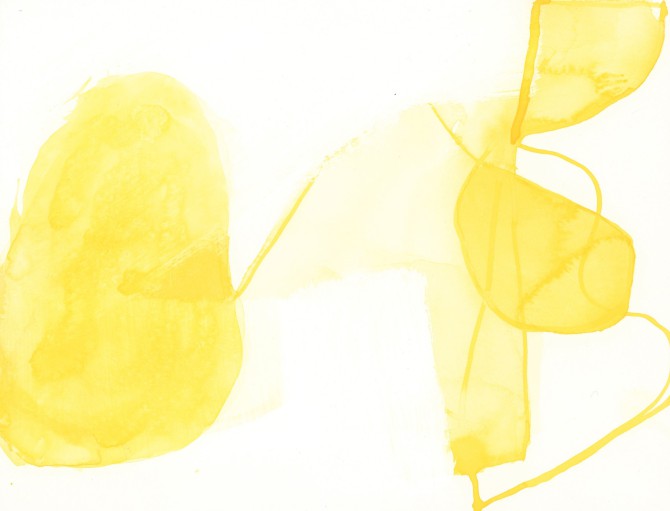
Oliver Thie, aus der Serie: kleinlühen, 2020, Watercolor on paper, 18 × 24 cm. Courtesy Oliver Thie.
Installation View Showroom Galerie Georg Nothelfer. Photo: Gernot Seeliger.
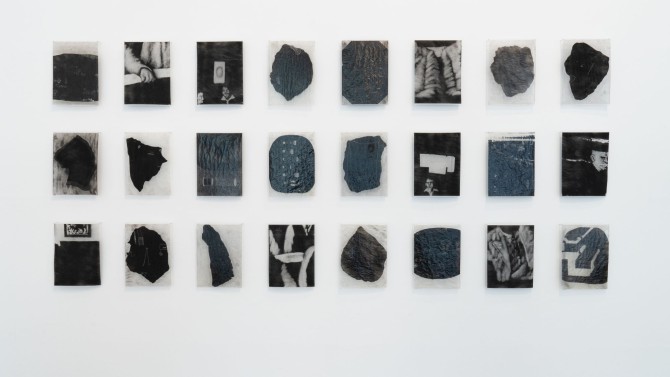
Installation View Showroom Galerie Georg Nothelfer. Photo: Gernot Seeliger.
Oliver Thie, from the Series: Die, 2019, Soot, shellac on glassine paper, 29,5 x 21 cm. Courtesy Oliver Thie. (SOLD)
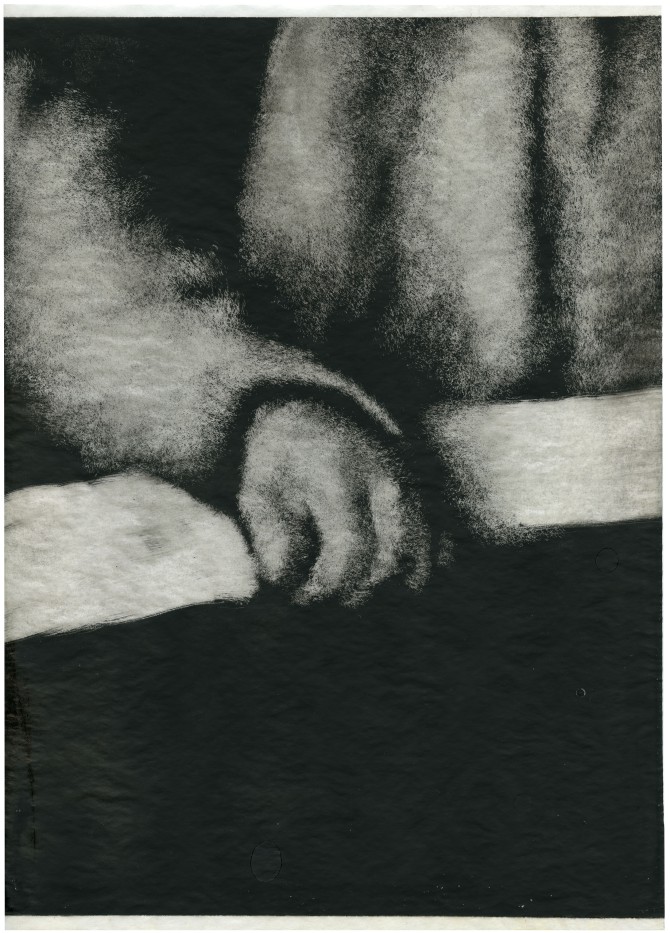
Oliver Thie, from the Series: Die, 2019, Soot, shellac on glassine paper, 29,5 x 21 cm. Courtesy Oliver Thie. (SOLD)
Oliver Thie, from the series: Die, 2019, Soot, shellac on glassine paper, 29,5 x 21 cm. Courtesy Oliver Thie.
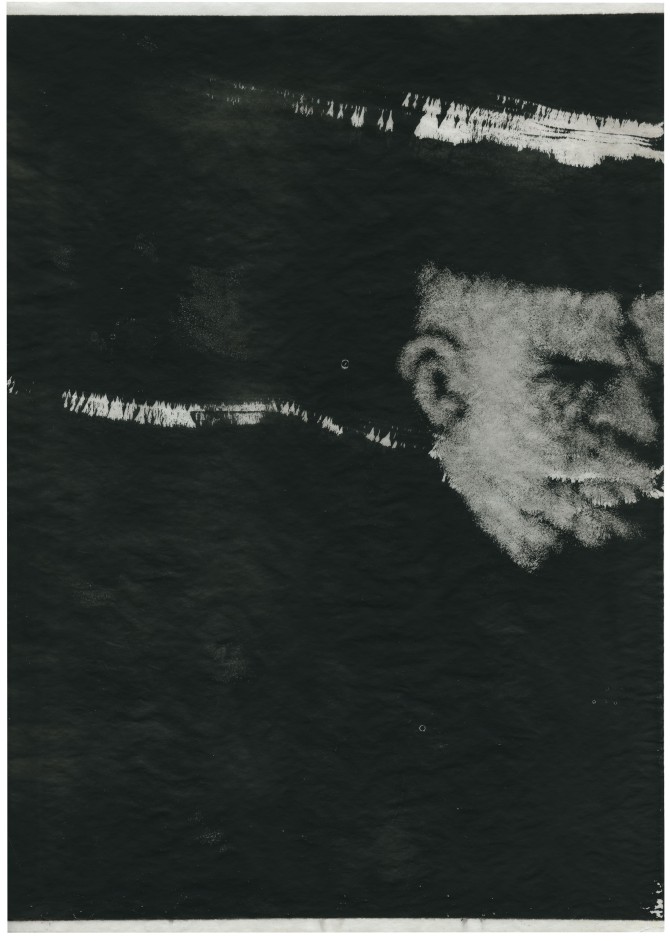
Oliver Thie, from the series: Die, 2019, Soot, shellac on glassine paper, 29,5 x 21 cm. Courtesy Oliver Thie.
Oliver Thie, from the series: Untitled (shadow catcher methode), 2018, Soot, shellac on glassine paper, 29,5 x 21 cm. Courtesy Oliver Thie.
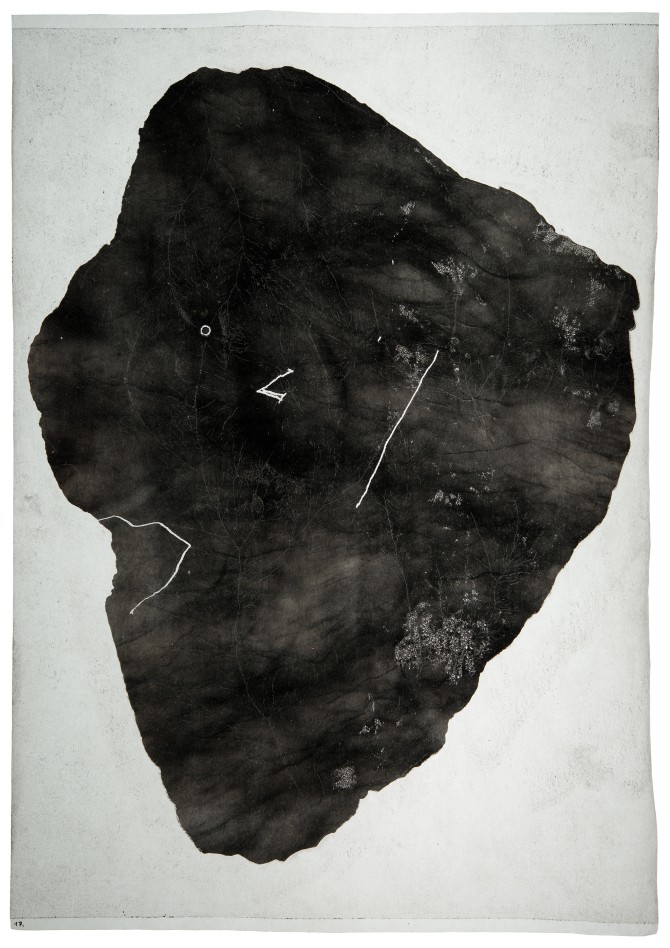
Oliver Thie, from the series: Untitled (shadow catcher methode), 2018, Soot, shellac on glassine paper, 29,5 x 21 cm. Courtesy Oliver Thie.
Installation View Showroom Galerie Georg Nothelfer from outside, left side. Photo: Gernot Seeliger.
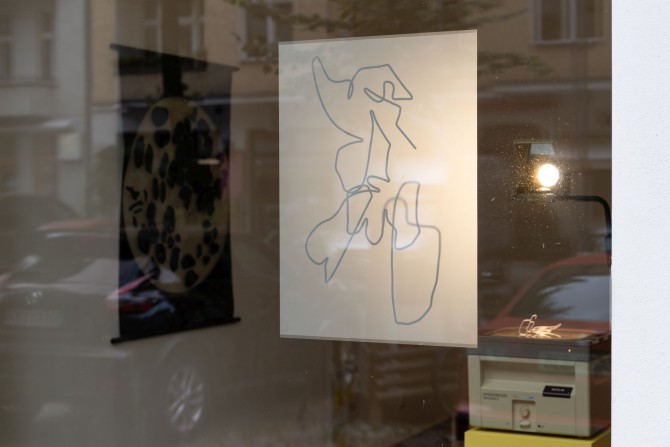
Installation View Showroom Galerie Georg Nothelfer from outside, left side. Photo: Gernot Seeliger.
Installation View Showroom Galerie Georg Nothelfer. Photo: Gernot Seeliger.
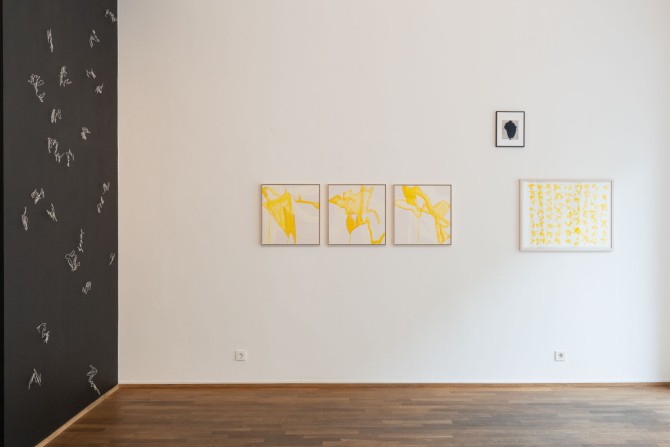
Installation View Showroom Galerie Georg Nothelfer. Photo: Gernot Seeliger.
Installation View Showroom Galerie Georg Nothelfer. Photo: Gernot Seeliger.
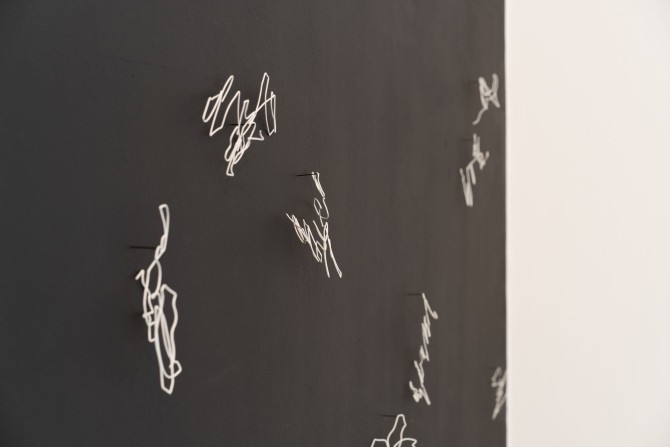
Installation View Showroom Galerie Georg Nothelfer. Photo: Gernot Seeliger.
Works from the series: The verb lühen, in capital letters, 2020, watercolor, acrylic on paper, 52,7 x 50,8 cm each. Photo: Gernot Seeliger.
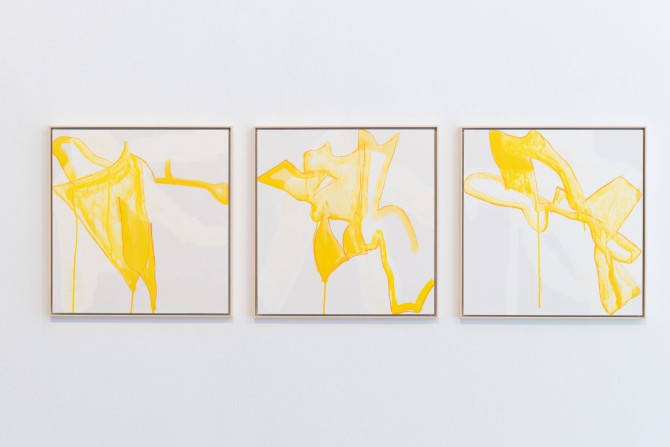
Works from the series: The verb lühen, in capital letters, 2020, watercolor, acrylic on paper, 52,7 x 50,8 cm each. Photo: Gernot Seeliger.
Installation View Showroom Galerie Georg Nothelfer. Photo: Gernot Seeliger.
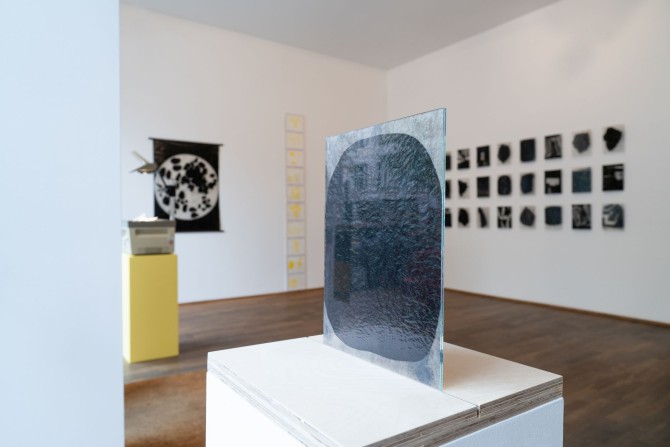
Installation View Showroom Galerie Georg Nothelfer. Photo: Gernot Seeliger.
Installation View Showroom Galerie Georg Nothelfer. Photo: Gernot Seeliger.
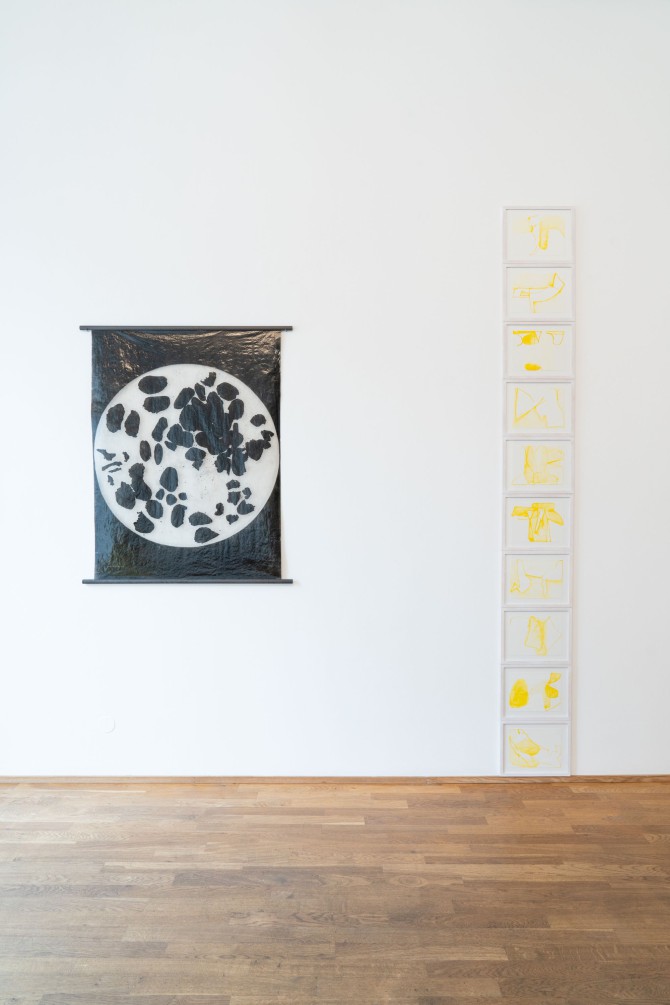
Installation View Showroom Galerie Georg Nothelfer. Photo: Gernot Seeliger.
Installation View Showroom Galerie Georg Nothelfer. Photo: Gernot Seeliger.
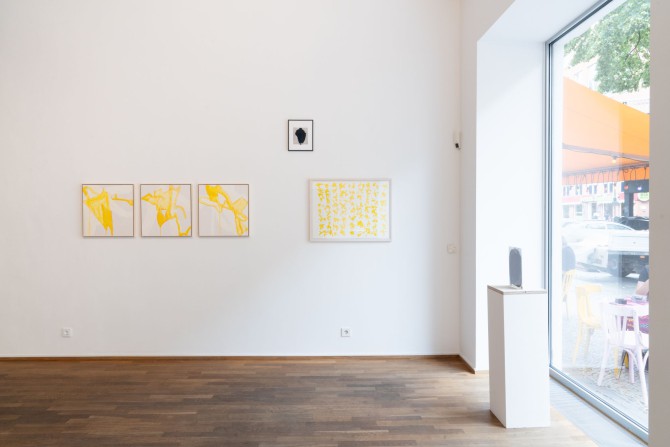
Installation View Showroom Galerie Georg Nothelfer. Photo: Gernot Seeliger.
Oliver Thie, Das Verb lühen, list 1, 2020, Watercolor on paper, 56 x 76 cm. Courtesy Oliver Thie.
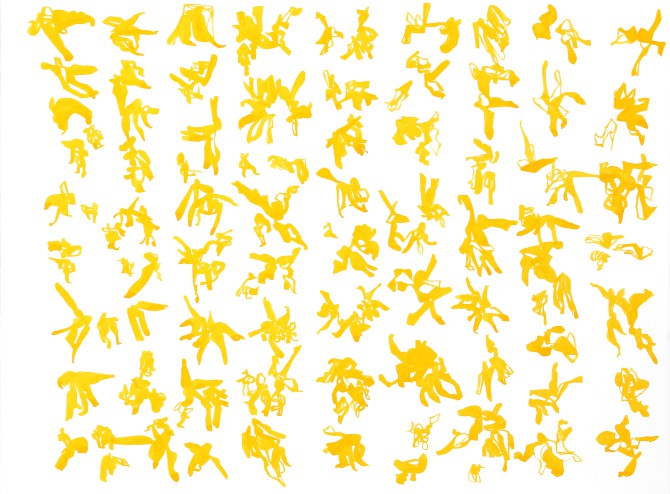
Oliver Thie, Das Verb lühen, list 1, 2020, Watercolor on paper, 56 x 76 cm. Courtesy Oliver Thie.
Oliver Thie, The verb lühen, in capital letters, 2020, Watercolor, acrylic on paper, 52,7 x 50.8 cm. Courtesy Oliver Thie.
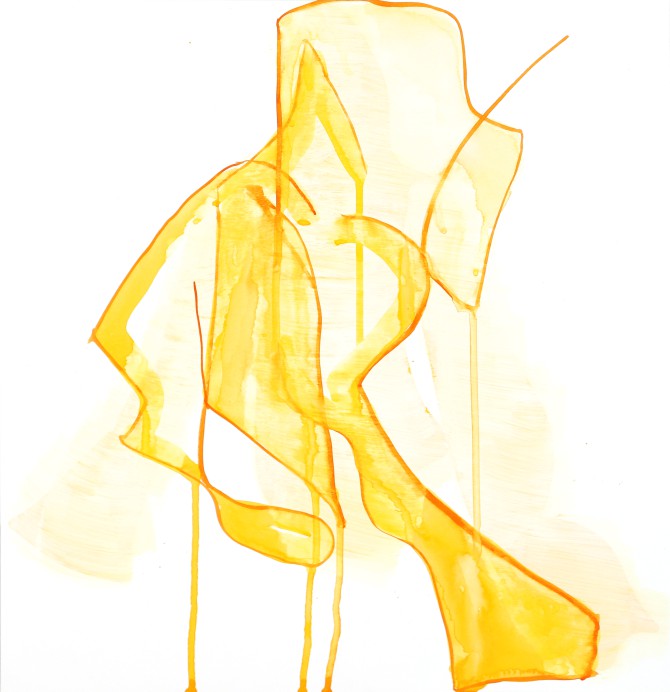
Oliver Thie, The verb lühen, in capital letters, 2020, Watercolor, acrylic on paper, 52,7 x 50.8 cm. Courtesy Oliver Thie.
Installation View Showroom Galerie Georg Nothelfer. Photo: Gernot Seeliger.
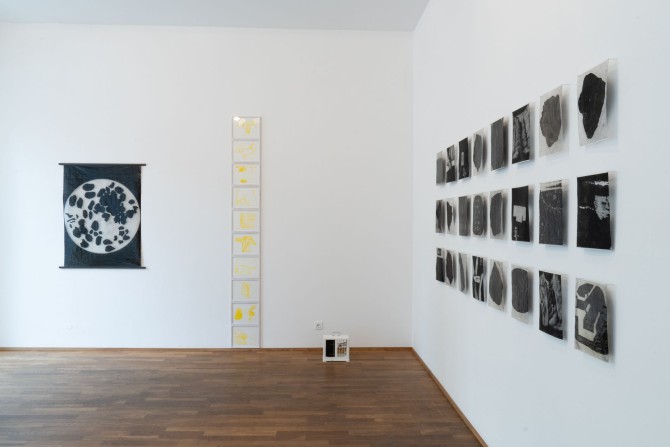
Installation View Showroom Galerie Georg Nothelfer. Photo: Gernot Seeliger.
Galerie Georg Nothelfer is pleased to present a solo exhibition of works by the Berlin artist Oliver Thie in the Showroom in Grolmanstraße.
But he enriches me, he makes me see something completely different from what I see every day.
But he enriches me, he makes me see something completely different from what I see every day.
Paul Valéry
Black shapes on thin glassine paper hang neatly lined up next to each other. Their delicate constitution is created not only by the paper alone, but also by the application of paint, which appears cloud-like, sometimes as a compact structure, sometimes as a fine touch. In this way, a play with light is created, which penetrates more strongly through the transparent paper at the thinner layers of paint. The moving, self-contained surface is interrupted in some works by lines, curves, dots or strokes, whose visibility is owed to the erasure of the cloudy background.
These works stand in striking contrast to other works in the exhibition, which draw the eye precisely because of their luminous brightness. Here, instead of a black-colored but translucent background, an opaque white paper surface forms the basis for the drawings that appear on it, all of which are in yellow and owe their visual presence to a process of applying rather than removing material.
Fine white wire structures occupy a third position. Their bright loops contrast both with the dark wall in front of which they seem to float and with the shadow that one of them casts on the window pane.
What unites all the works in the exhibition is the exploration of the possibilities of drawing. The question of how to approach the perception of natural phenomena through different forms of representation is central to the works of the artist Oliver Thie. How does the drawing show what it shows? How do recognition and cognition find each other in drawings? The two parts of the exhibition title "Schwarzraum/Gelbzeit" (Black Space/Yellow Time) are to be understood both as the artist's claim to himself and as an invitation to the viewer to engage in "thinking with the image," to understand them, as it were, as questions of image philosophy.
Thie uses the term "black space" as a counterpart to "white space," which is often mentioned in connection with drawings. Beyond that, however, it is less the play on words but rather the associated reversal of the gaze that interests him: For the "black space" at the same time holds what Aristotle called the potentiality of darkness that necessarily accompanied light and cognition. The drawings that can be found on the transparent papers prepared by Thie with soot are therefore less drawings in the classical sense than exposures that come to the surface from the depths of an infinite possibility space of the image. This reveals an important characteristic of drawings in general: Drawings appeal to us not primarily because they show something concrete, but because they make showing and recognizing possible in the first place.
In the exhibition, the works on "Black Space" correspond in turn with the works on "Yellow Time," which, in contrast to the former, always concern a specific point in time and always something specific that becomes visible precisely at this place and at this time. This something that Thie focuses on are forsythia blossoms, whose blossoming and fading he takes as a starting point for the question of how temporality can both be recorded with the means of drawing and at the same time inscribed in the drawing as a condition of its own appearance.
The special feature of Thie's works is not only his approach. For their realization, he not only resorts to classical means of drawing, but expands them with his own material experiments:
The black formations owe their existence to experiments with soot, transparent paper, and an overhead projector. They are owed to the attempt to "catch" the ephemeral appearances of the shadow of different origin - once from three-dimensional objects such as stones, once from slide projections.
He approaches the phenomenon of time, which underlies both blooming and fading, through various devices and techniques. In order to escape the 'trap' of representation, when drawing he concentrates exclusively on the object and not on the registering activity of his hand, which 'blindly' puts what he sees on paper. The resulting 'blind drawings' are then subjected to a multi-stage revision process. Thus, the drawing of a just-opened blossom is first transposed into watercolor, but then erased again with white acrylic paint, in order to paint over it again with watercolor, but this time with recourse to the blind drawings of the withered blossoms. In this way, not only do different layers of time embed themselves in the sheet, but each layer also forms the basis for the renewal of the visible.
In turn, his wire objects - three dimensional recreations of blind drawings - form a visible bridge between his explorations of drawing as an art of time and as an art of space. By taking up the line of the drawing and thus spatializing it, the bent wire draws attention to its temporal conditions of creation - beginning and end, before and after. The circle closes with an experimental setup at the gallery's large window. A wire object casts its shadow on the pane facing the street and refers back to its underlying blind drawing in the form of a shadow. Thie thus illustrates the permeation of space and time as a condition and enabling ground of drawing.
Text: Kathrin Mira Amelung (media and culture scientist)
Text: Kathrin Mira Amelung (media and culture scientist)
Oliver Thie (*1983) studied at the Kunsthochschule Berlin Weißensee and graduated in 2015 as a master student of Prof. Nanne Meyer. In recent years he has had solo exhibitions at the Museum für Naturkunde, Berlin, the Tieranatomisches Theater, Berlin, and HAUNT, Berlin. He received a DAAD scholarship to the USA, was a research fellow of the Cluster of Excellence Image, Knowledge, Design at Humoldt-Universität, Berlin and is resident fellow at Künstlerhaus Eisenhammer in 2023.
Please note our Summer Break:
July 31 - August 12
July 31 - August 12